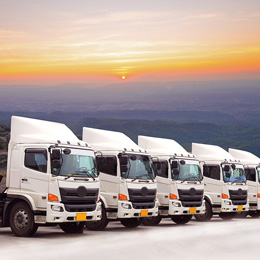
As the unpredictable economy of 2021 rounds the corner on its way to completion of the first quarter, businesses are undergoing various pattern changes of equipment investment demand depending on the particular market the sectors serve.
The Equipment Leasing & Finance Foundation’s U.S. Equipment & Software Investment Momentum Monitor found that1 many vertical sectors are reporting constant weak momentum after the COVID-19 pandemic abruptly halted and disrupted investment during the first half of 2020.
Many Transportation Segments Seeing Rapid Recovery
Vertical segments that are highly affected by a stalemate in consumer mobility, mainly aircraft, are predicted to remain weak. For now, other vertical segments have the possibility for a stronger and faster recovery, including Class 8 tractors, industrial equipment and medical equipment.
This speed up in recovery for transportation fleets is a direct result of many of the country’s reopening plans. The shutdown placed heavy dependability on shipping activity for transporters, which in return has placed an exorbitant number of miles on trucks on the road today. Because of this, truck reinstatement and acquisition strategies will develop further in 2021, and will be a crucial decision for many companies.
This activity has begun to take hold of the industry, as the current figures show that North American Class 8 orders in December attained the fourth-highest volume ever as they surpassed and out preformed 50,000 for the second month in a row, according to ACT Research, citing truck makers’ initial data.2
Health, Grocery, Retail Segments Driving Demand
With so much time and energy placed on upgrading older trucks that have extended beyond their maximum potential with the utilization of miles on the vehicle, and with more efficient trucks available, business owners and fleet operators have extensive decisions to make in how they will structure the financing of these replacement units in 2021.
Transportation fleets are placing more and more miles on their trucks while handling the increase in shipments on everything from grocery orders, health and sanitation products, as well as everyday items now being purchased through online channels.
Overall spending on Amazon.com during its two-day Prime Day event grew 36 percent in the U.S. compared with its promotional day last year, according to research firm Edison Trends. Before the event, research firm eMarketer estimated Amazon’s total U.S. Prime Day sales would reach $6.17 billion.3
Trucks will continue to play a significant role in the transportation of COVID-19 medicines as they continue to produce them in the coming months. Pfizer is just one of many companies now distributing and manufacturing these medicines to millions of Americans. The company has built a staging ground with 350 large freezers ready to provide the transportation of up to 100 million doses of vaccines, and another 1.3 billion in 2021.4
Procurement Strategies Lowering Costs
This means that organizations are increasingly scrutinizing and judging the impact and effect that the cost of truck operations, fuel, and maintenance and repair have on their transportation bottom line as trucks will play a huge role in these distribution channels.
Even beyond the price of diesel, more organizations today are making major changes to the life span of their trucks to reap the benefit from newer units that offer more fuel efficiency and overall total cost of ownership (TCO). A current analysis of truck life span data shows that fleet operators are now mulling a first-year per-truck TCO savings of $16,856 when updating a 2016 sleeper model-year truck to a 2021 model. The fuel savings were an amazing $5,084 per vehicle.5
The new and improved fuel economy of newer trucks – even when fuel prices are affordable— is an enormous reason why a fleet should stay up to date. That is in addition to the safety enhancements and CO2 depletion.
The question is how important is it to find every opportunity to keep costs down? United Parcel Service Inc. said recently it is delivering and distributing more packages due to the influx in online shopping, but the costs to deliver have also gone up. The company reported an increase in revenue of about 16 percent in the third quarter and profit heightened to 11.8 percent, but its large domestic business also reported a dramatic decline in net profits due to more hiring, delivery costs and $179 million in spending to speed up delivery times.6 These companies always are looking closely at every opportunity to minimize TCO to offset other operational costs and maintain profits.
Innovative Programs Infuse Cash Leading to Future Procurement
While some companies that had their focus mainly on grocery distribution saw amazing years in terms of gains, not all transporters saw gains in 2020. In addition, the uncertain economic climate has placed huge challenges to their fleet operations and bottom lines.
Many organizations needed to cut back their fleets because of the decreased business activity, such as distributors serving restaurants that were closed. More than a quarter of executives polled in a recent industry survey7 (27 percent) said they minimized their fleets, and new industry programs were established8 to help organizations scale their fleets appropriately while infusing much-needed cash into their operations.
These innovative and clever programs will continue to work for businesses that need to right-size their fleet operations yet wish to remain competitive with their future truck procurement strategies in 2021 when the economy hopefully begins to rebound.
1: Equipment Lease Finance Foundation’s “2020 Economic Outlook Q4 Industry Snapshot”: https://www.leasefoundation.org/industry-resources/industry-snapshot/
2: https://www.ttnews.com/articles/december-class-8-orders-fourth-best-ever
3: https://www.wsj.com/articles/amazons-prime-day-accelerates-shift-to-online-shopping-11602846014?mod=djemlogistics_h
4: https://www.wsj.com/articles/pfizer-sets-up-its-biggest-ever-vaccination-distribution-campaign-11603272614?mod=djemlogistics_h
5: https://www.fleetadvantage.com/press-releases/fleet-advantages-newest-truck-lifecycle-data-index-shows-continued-fuel-savings-carbon-reduction-when-replacing-aging-truck-units
6: https://www.wsj.com/articles/ups-posts-strong-gains-as-package-volumes-swell-11603882106?mod=djemlogistics_h
7: Fleet Advantage COVID-19 Truck Utilization Survey, August 2020, presented to 1,500 truck fleet executives across the U.S.
8: https://www.fleetadvantage.com/press-releases/fleet-advantage-unveils-sale-leaseback-program-designed-to-infuse-cash-flexibility-for-transportation-fleets